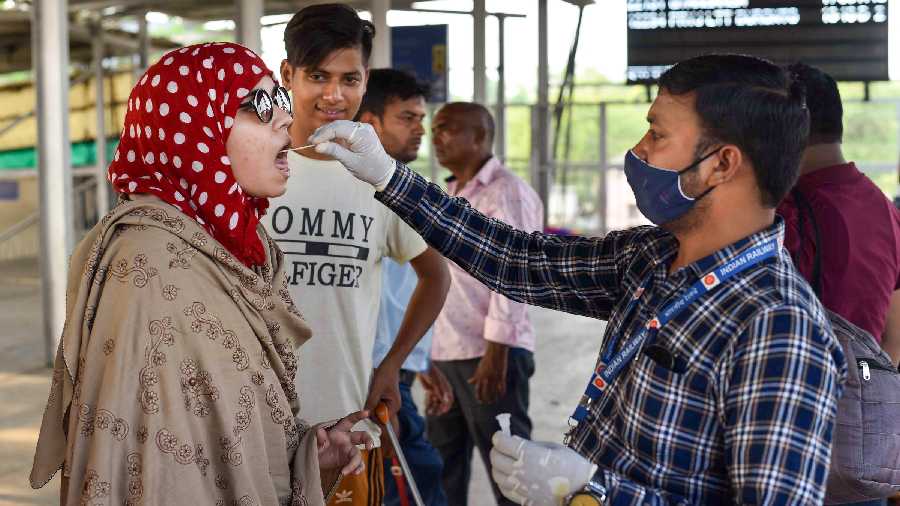The health ministry on Friday asked all the states to follow a Covid-19 surveillance strategy released six months ago in June and aimed at early detection of unusual patterns of illness amid sustained low incidence levels and hospitalisation rates.
Health experts say the ministry’s instructions, while triggered by a rise in the average daily new Covid-19 cases in China, come at a time India’s population is largely protected from existing Covid-19 variants — through immunity from natural infections and vaccinations. The ministry’s June 9 surveillance guidelines emerged four months after the peak of India’s third Covid-19 wave as the epidemic entered what the ministry described as a “new phase”, marked by sustained low incidence, mild illness and low hospitalisation rates.
Health secretary Rajesh Bhushan has asked the states to “ensure effective compliance” of the June 9 surveillance guidelines covering healthcare facilities, local populations, and viral genome sequences to look for outbreaks of acute respiratory infections, new variants, or changes in hospitalisation rates.
Bhushan, in a letter to top state administrators, also said hospitals should take stock of their existing capacities, including beds, and reorient healthcare workers in the clinical management of Covid-19 to remain prepared for any surge in cases.
“Available evidence tells us that we’re at the same point now as we were six months ago,” said Rajesh Karyakarte, the head of microbiology at the BJ Medical College, Pune, and Maharashtra state coordinator for coronavirus genome sequencing.
He said genome sequencing data suggest that multiple sublineages of the omicron variant, which had fuelled the country’s third wave, had run their course in the country over the past few months without causing changes in disease severity or hospitalisation rates.
“None have established themselves,” Karyakarte said. Among sublineages that have circulated in India are BA.2.38, BA.2.74, BA.2.76, and XBB. The sublineage BF.7, linked to the current outbreaks in China, had emerged in India six months ago but could not establish itself, either.
“A new coronavirus variant would have to be substantially different from omicron to cause a severe wave in India,” said Anurag Agrawal, a physician-researcher and dean of biosciences at Ashoka University, Sonipat (Haryana).
India has recorded an average 153 daily new cases over the past week and had 3,380 active patients on Friday. During the peak of the third wave, India had over 330,000 daily new cases and over two million active patients.
But experts caution that low testing levels, poor surveillance and inadequate alert mechanisms could undermine India’s ability to detect unusual signals of changing infection patterns early.












